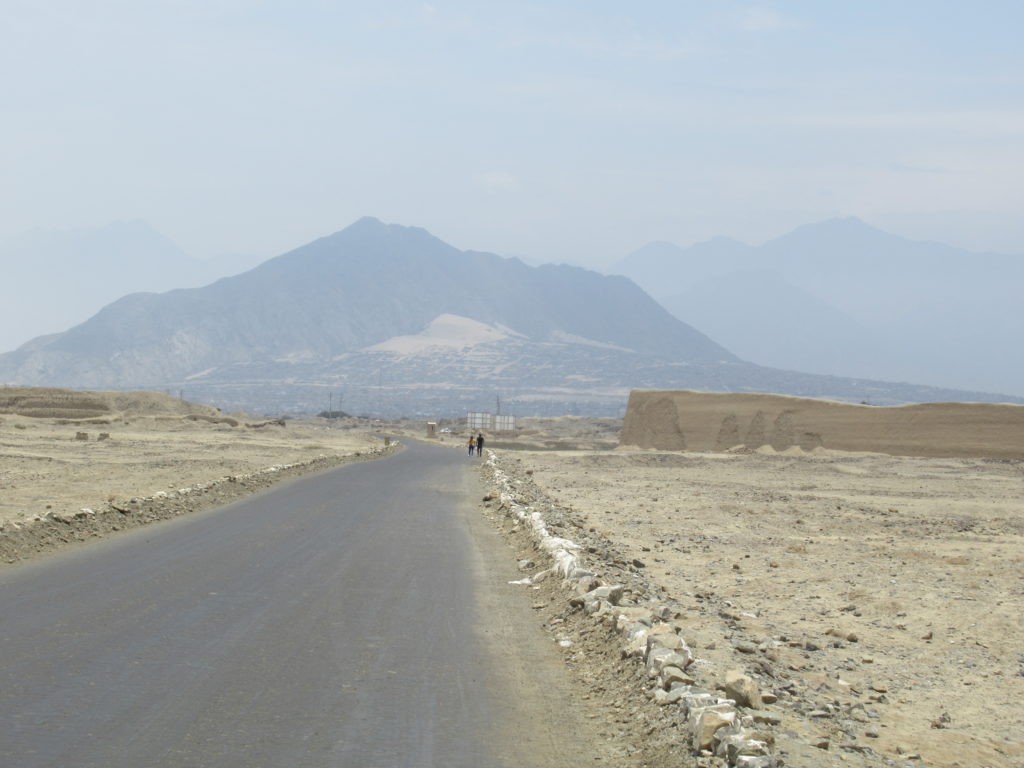The ancient Chimu capital of Chan Chan
More ruins? Yes, Peru is all about ancient ruins… we had only really been aware of famous Inca ruins such as Machu Picchu before this trip – but there are lots more ruins -and many of them are not Inca.
In this case, the ruins of Chan Chan are the ruins of a Chimu city. Are you keeping up? We have visited so far in Peru (in order of age), ruins of Caral, Moche, Huari, and Inca civilisations – the Chimu came between the Huari and the Inca. Yes, there were more pre-Columbian civilisations than you think!
To get to Chan Chan is a simple minibus ride from Trujillo – it drops you off first at the museum on the main road, and then after visiting the museum, you can walk around 2km into the ruins themselves. Chan Chan is in fact HUGE! It covers 20 square kilometres and consists of TEN large citadels spread across the desert. It is the largest adobe city in the world according to some sources – although it’s in ruins and nobody lives there – so I’m not sure how it counts?!? Anyway, only one of the ten citadels has been restored and is open for visitors, but there is nothing to stop you wandering off into the desert to walk amongst the ruins of the other ones….. EXCEPT… there are apparently lots of muggers hanging out amongst the other ruins… so, we restricted our visit to the open ruin 🙂
The citadel has been quite heavily rebuilt, otherwise it would just be a pile of mud… and it’s nice to get an idea of what it would have been like in its full glory – but after seeing the original walls and murals in other ruins nearby, it felt kind of ‘fake’ – which I guess some of it is… but probably better than just walking around a pile of mud and dust – what can you do? With stone ruins they can use the same stones and rebuild the walls – but with adobe ruins, once it’s washed away you have to create it again.
Apparently all the rebuilding work has been done with adobe in the traditional way, and then sprayed with a hardener and preserver to stop it deteriorating. So what you see is a mix of original and rebuilt (mostly rebuilt in the case of the citadel open to visitors)
Anyway, it was still pretty cool to walk around – and we enjoyed our visit – but not as much as we enjoyed the other ruins near Trujillo.
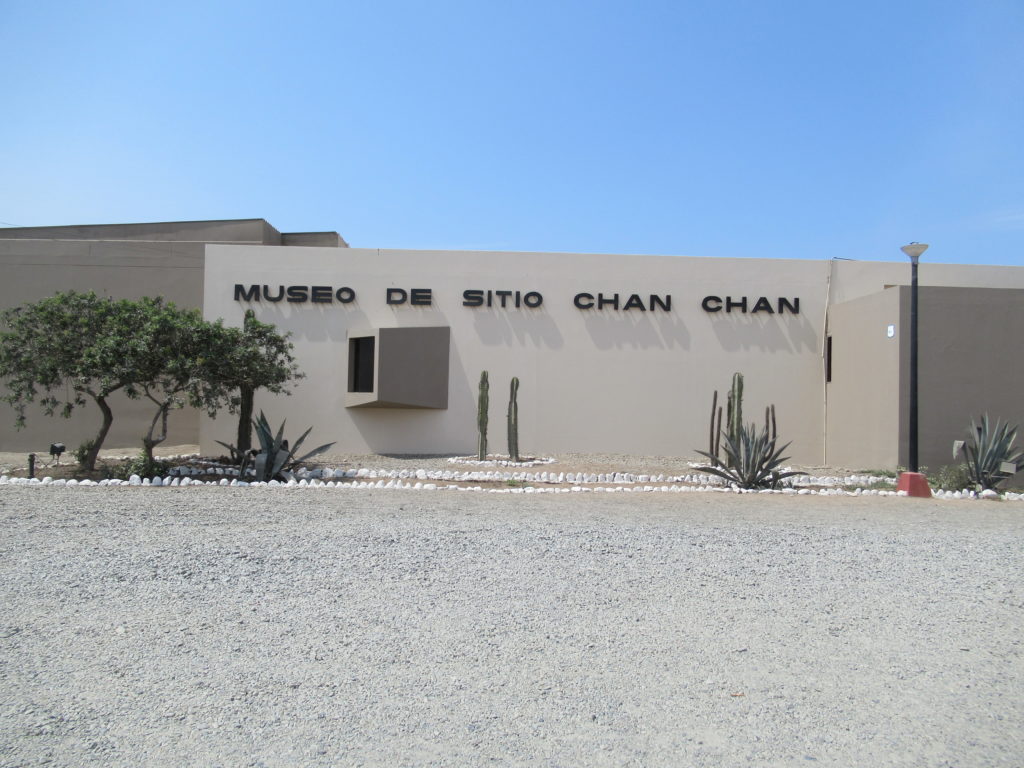
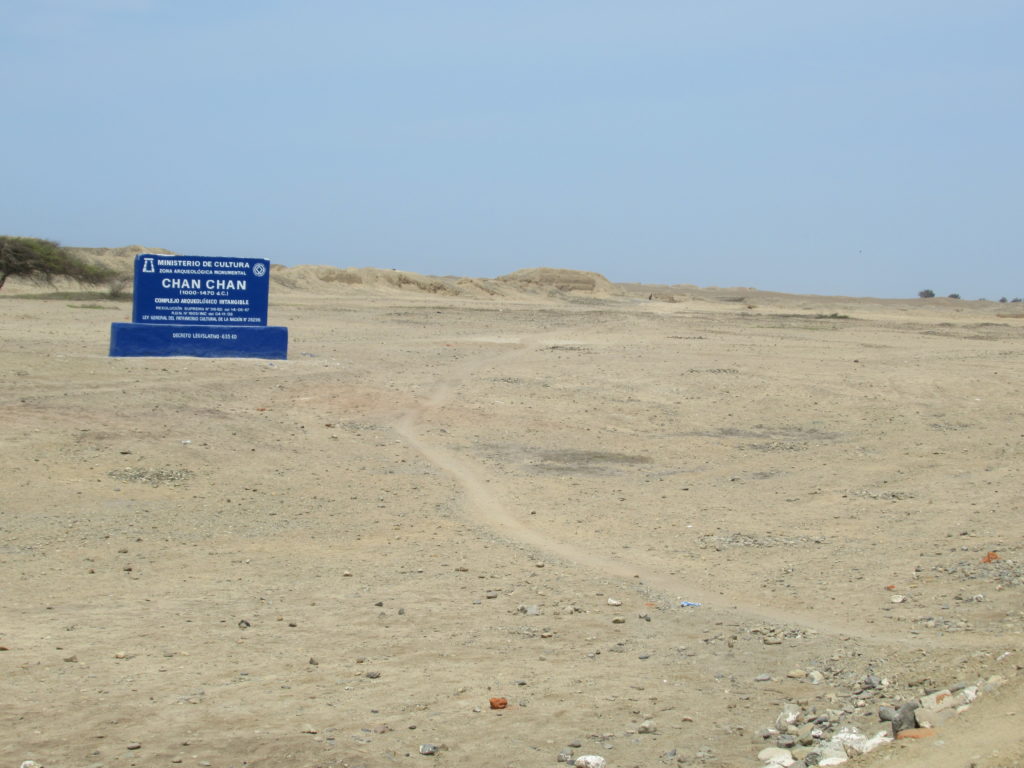
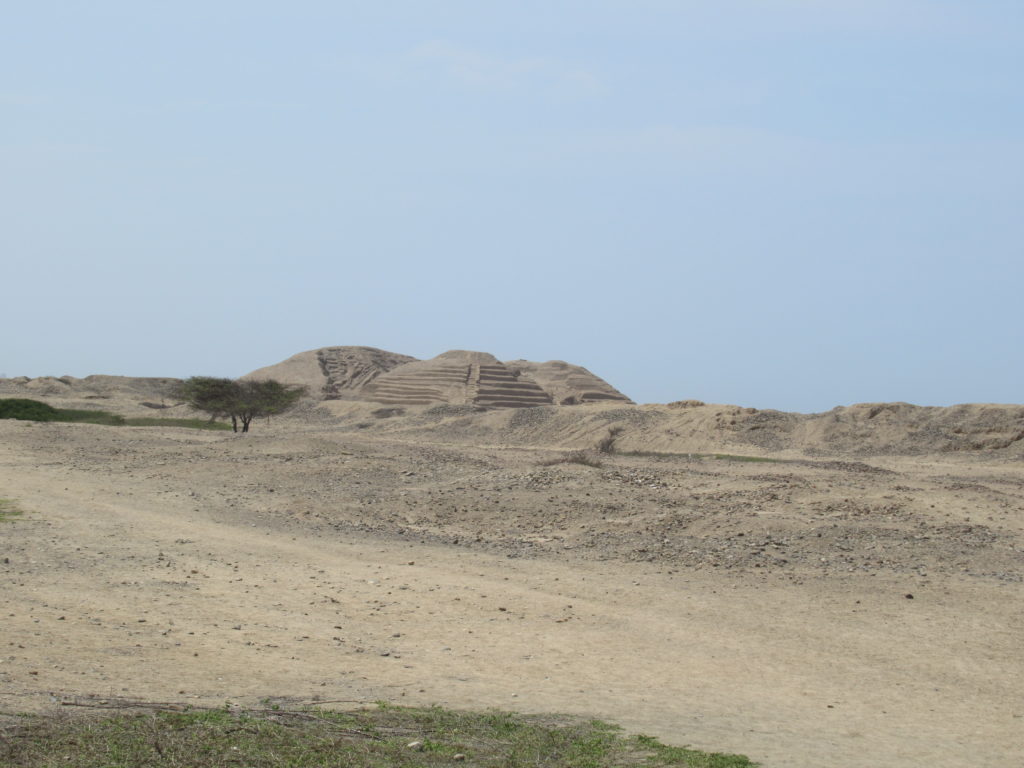
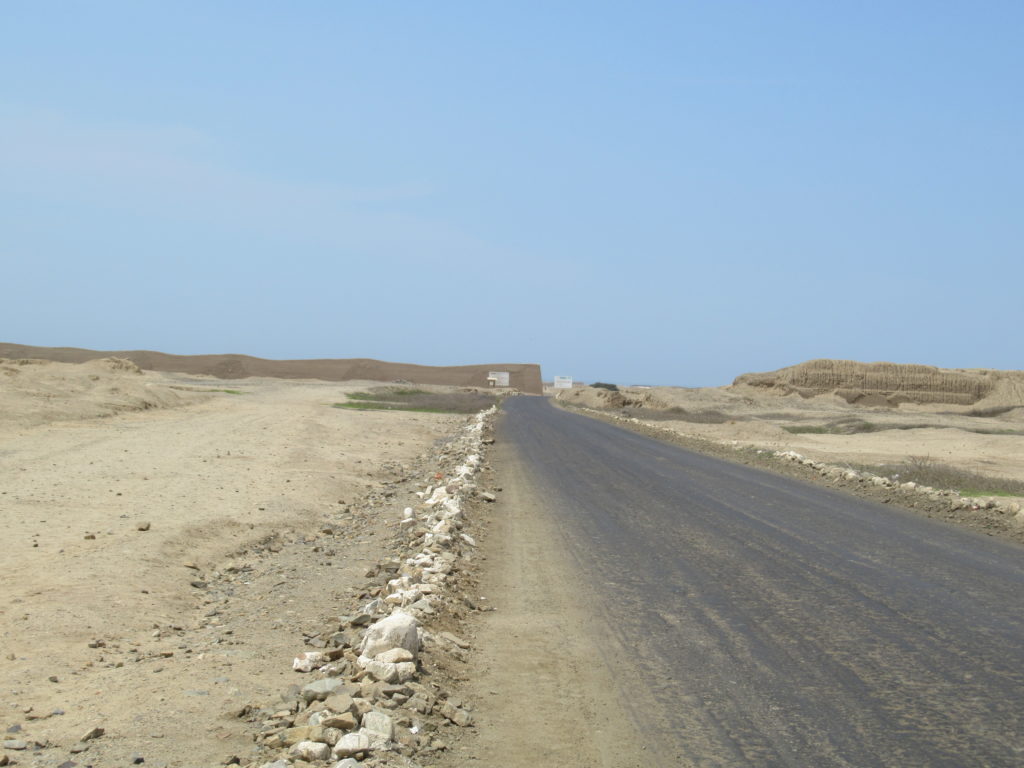
Chan Chan was built in around 850 AD and had a population of around 50,000 people. They prospered until the Incas came along and conquered them in 1470, and then 50 years later the Spanish came along, founded the city of Trujillo, and then stole all the gold and treasure from the city – leaving it in heavy decline.
Because of its location in the desert, water was a very important theme for the Chimu people, and the citadels were decorated with carvings of fish, waves, pelicans and other elements to do with water. It rains very little here, except in El Niño years when there is torrential rain. The Chimu would repair their city every time parts of it got washed away – but in modern times it just got continually washed away until relatively recently – when Chan Chan was added to the Word Heritage List (1986), and a conservation plan was put in place (1998).
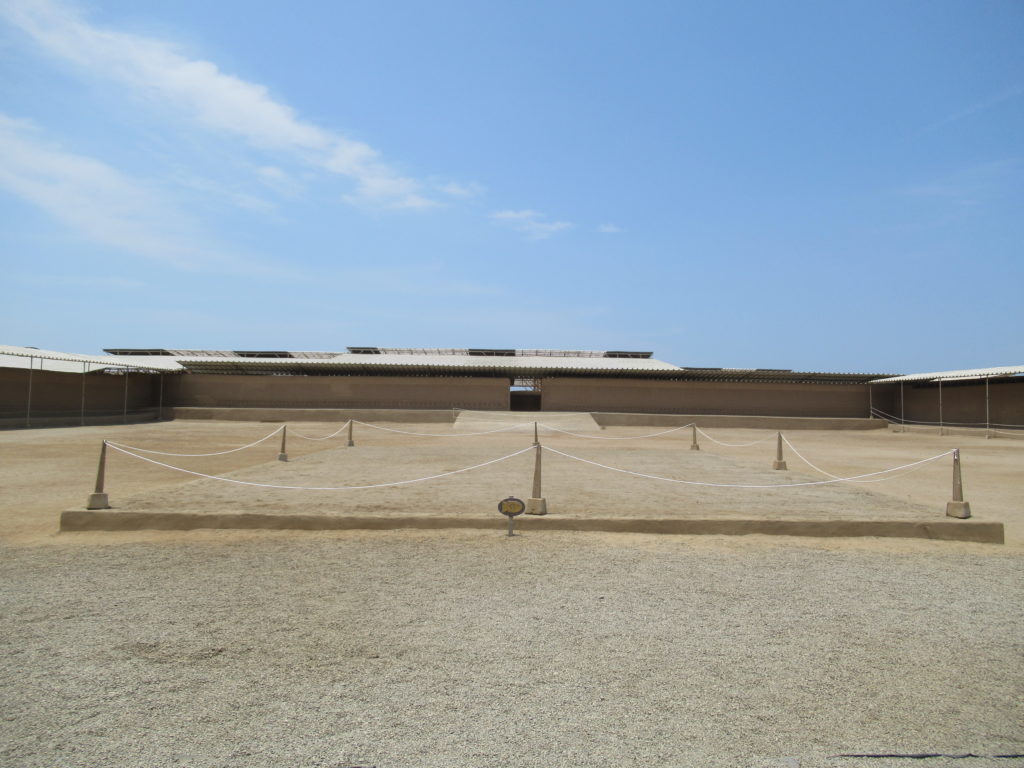
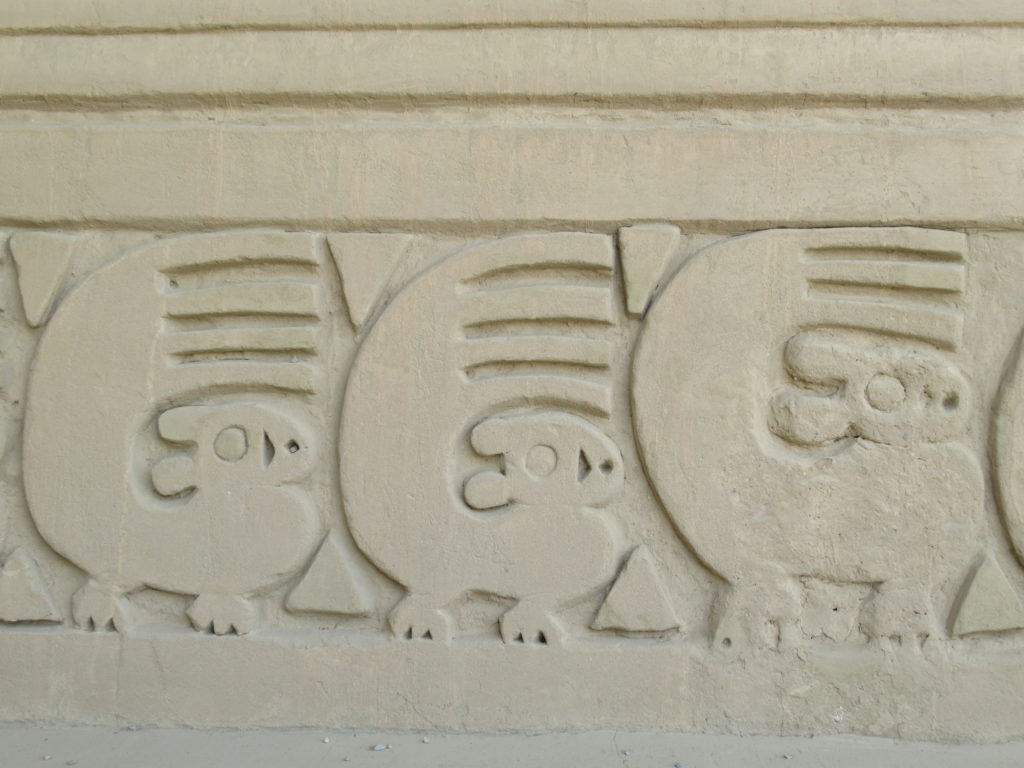
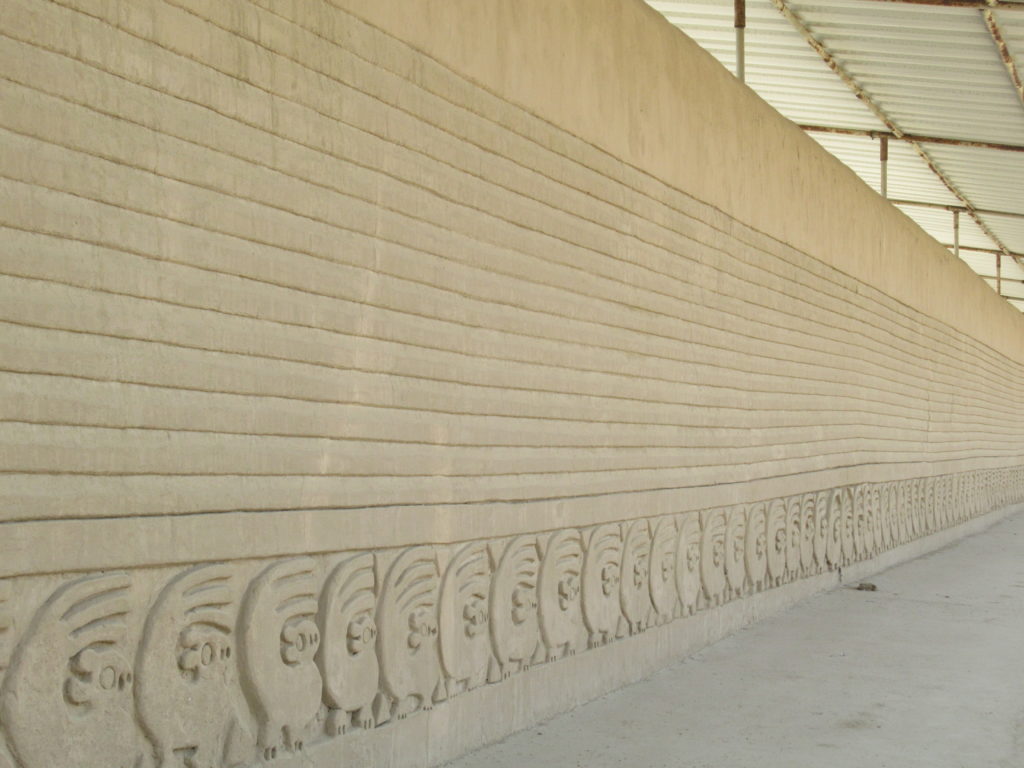
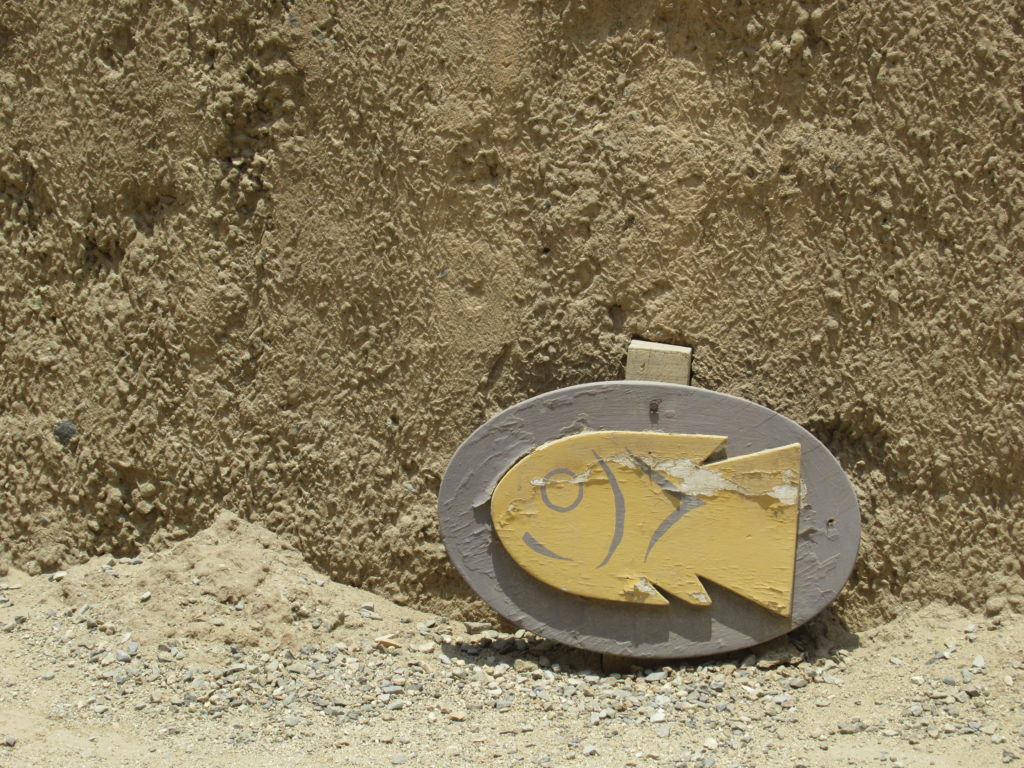

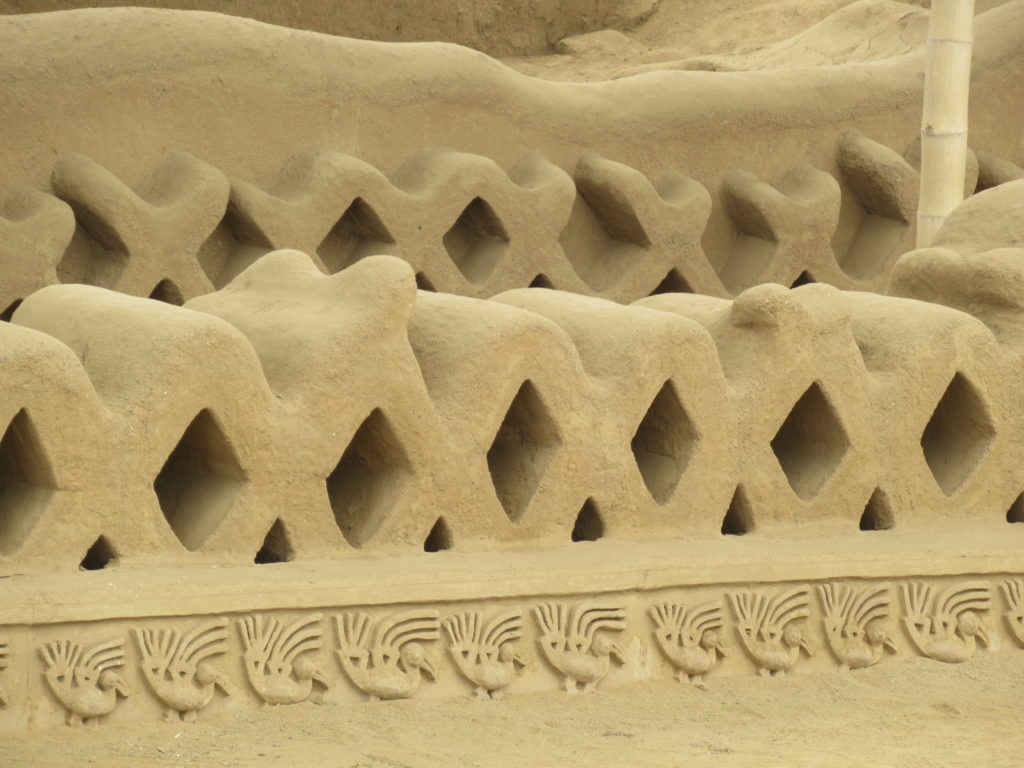
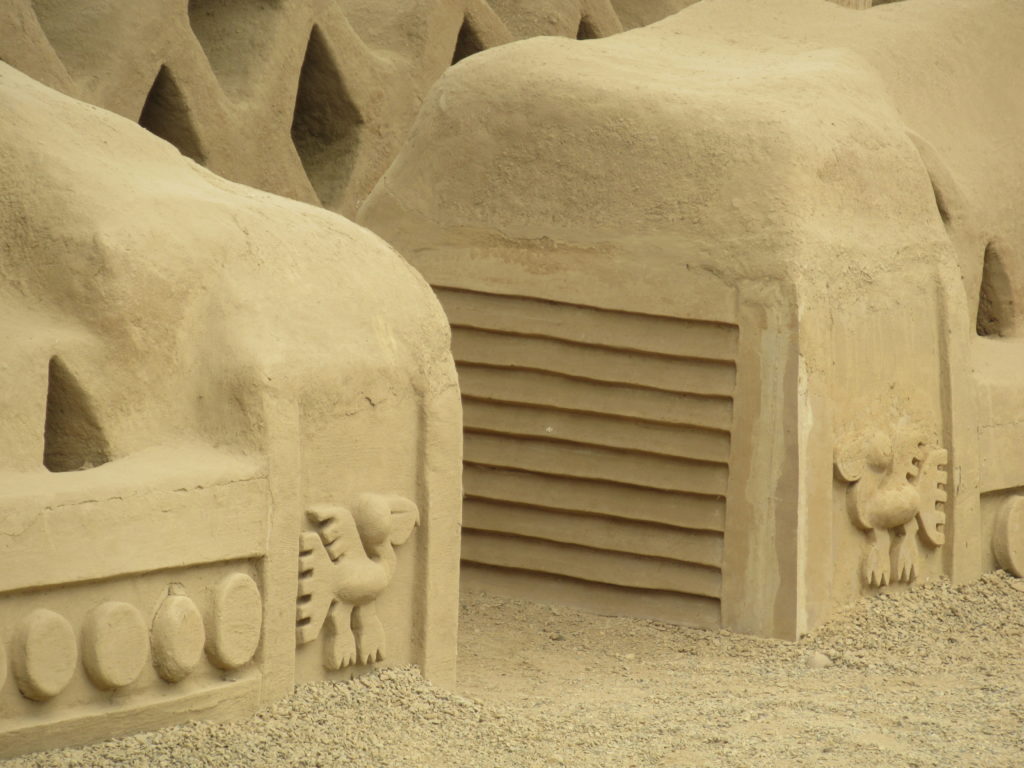
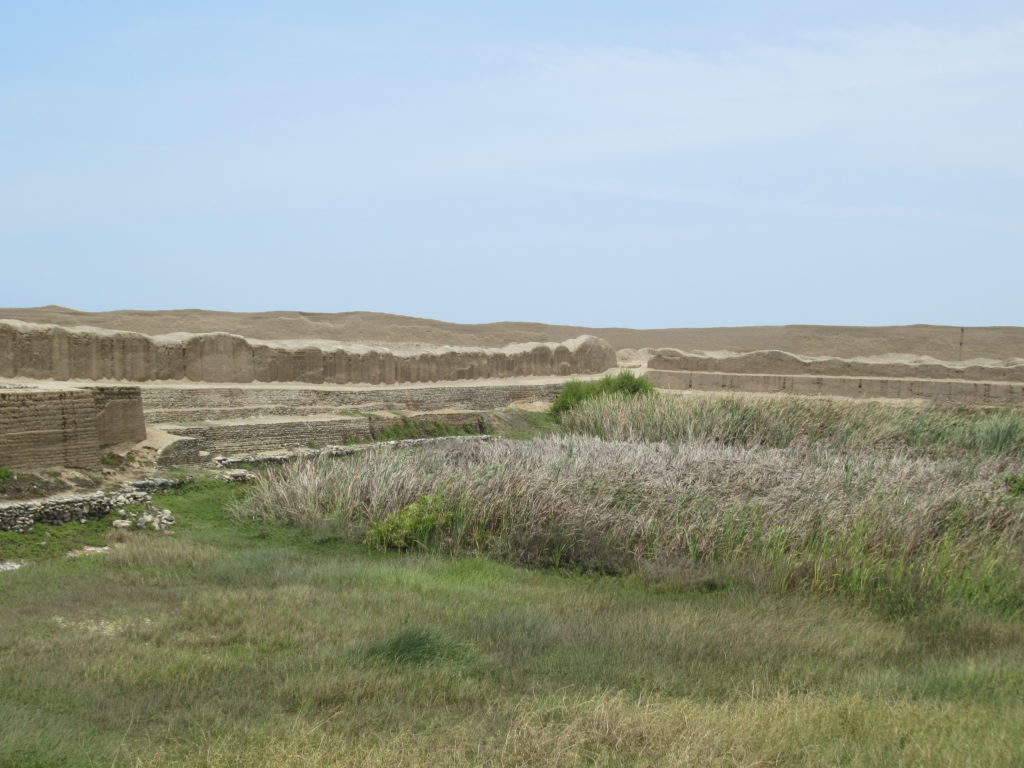
It didn’t take very long to do the walk around the citadel – and before we knew it, we were back at the entrance – where we ran into another Peruvian hairless dog. This one wanted to make up for its lack of hair by growing a punk mohican.
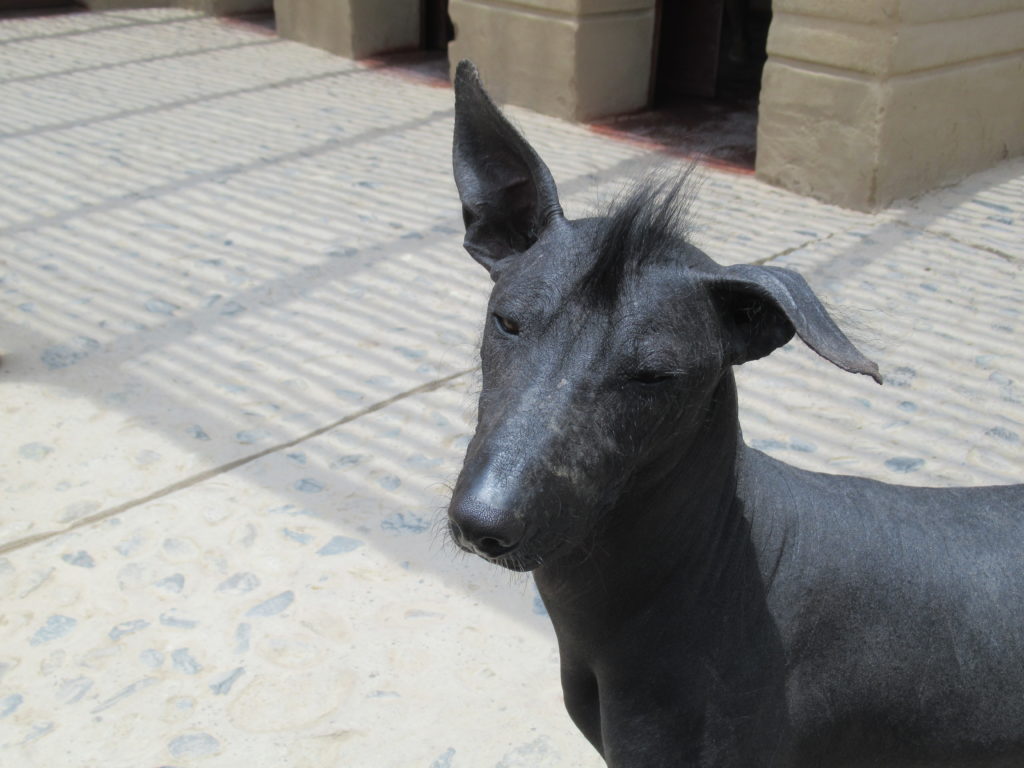
These dogs were bred and domesticated before Inca times – and appear on the pottery of some of the ancient cultures. This mohican dog probably had ‘Inca Dog’ ancestors! After saying goodbye to mohican dog, it was time to start the walk back to the highway and catch the minibus back to Trujillo – another day of Peruvian ruins was over.
